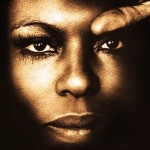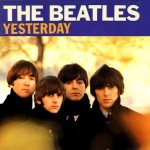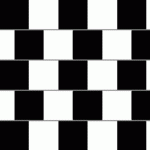Sharp-Nine or Flat-Ten
 The chords consisting of the notes C, E, G, B-flat and E-flat (or D-sharp), how is it notated? In the States most musicians will write
The chords consisting of the notes C, E, G, B-flat and E-flat (or D-sharp), how is it notated? In the States most musicians will write C7>9
. In The Netherlands however, it is common to notate it as C7<10
. And in the early days of jazz, the latter way of writing seems to have been more common in the States as well.
Lowercase Symbols
 When I was eighteen and just started playing the piano, I talked to my somewhat eccentric uncle, who was a fanatic amateur musician. He told me I should write minor chords using lowercase letters. Being impressed by his overwhelming personality, I followed his advice. And it is not a bad idea! It matches the way major and minor keys are sometimes notated in classical music (especially in European countries). For example, a violin concerto would be in D-major or in d-minor. And using uppercase and lowercase matches the way scale degrees are commonly notated.
When I was eighteen and just started playing the piano, I talked to my somewhat eccentric uncle, who was a fanatic amateur musician. He told me I should write minor chords using lowercase letters. Being impressed by his overwhelming personality, I followed his advice. And it is not a bad idea! It matches the way major and minor keys are sometimes notated in classical music (especially in European countries). For example, a violin concerto would be in D-major or in d-minor. And using uppercase and lowercase matches the way scale degrees are commonly notated.
The Sus4
 The suspended fourth is an alteration of a chord, in which the third is moved up to the fourth note (counting from the root of the chord). For example, in
The suspended fourth is an alteration of a chord, in which the third is moved up to the fourth note (counting from the root of the chord). For example, in Csus4
the third is moved up to the f. In the classical harmony the fourth has to be resolved to the third. In jazz and pop a lot of times this chord will be followed by a regular triad as well. (Though in some styles the sus4
sounds fine as it is.)
Real Book and New Real Book
 In my work as an arranging teacher at the conservatory, I often encounter students claiming that a specific way of notating chords is wrong. Apparently they have learned to write chords in a certain way and they think that is the only correct way. That is a shame, they should have been told that there are a lot of differences in the way people use chord symbols.
In my work as an arranging teacher at the conservatory, I often encounter students claiming that a specific way of notating chords is wrong. Apparently they have learned to write chords in a certain way and they think that is the only correct way. That is a shame, they should have been told that there are a lot of differences in the way people use chord symbols.
The Notation of None Chords
 In jazz music, a ninth implicates the seventh. Thus, in
In jazz music, a ninth implicates the seventh. Thus, in C9
for example, you should play a seventh as well as the ninth. In this way, time is saved in both writing and reading chords, because most of the time you want to play a ninth in combination with a seventh. If you ever need to notate a chord with a ninth but without a seventh, you write Cadd9
. The above knowledge is taught on conservatories throughout the world, and you may find this information as well in theory books and on Wikipedia.
Writing middle parts
 Last week I gave a workshop on arranging and we worked on writing the middle parts in a homophonic score. The song we used was Killing me softly. I had written out the melody in the soprano and a bass line in the bass voice. The instruction was to fill in alto and tenor:
Last week I gave a workshop on arranging and we worked on writing the middle parts in a homophonic score. The song we used was Killing me softly. I had written out the melody in the soprano and a bass line in the bass voice. The instruction was to fill in alto and tenor:
Keys of Arrangements
 When you start writing a vocal arrangement, as far as I’m concerned, the key signature is not fixed. In most cases, first you decide which voice group will be singing the lead. Then you decide on the height of the melody and from that follows the key. Classical musicians often disagree with this way of working. In their opinion the key signature of a piece of music is fixed, because it’s a deliberate choice of the composer. And even in pop and jazz, they don’t dare to change the key.
When you start writing a vocal arrangement, as far as I’m concerned, the key signature is not fixed. In most cases, first you decide which voice group will be singing the lead. Then you decide on the height of the melody and from that follows the key. Classical musicians often disagree with this way of working. In their opinion the key signature of a piece of music is fixed, because it’s a deliberate choice of the composer. And even in pop and jazz, they don’t dare to change the key.
Arranging Exercise: Homophonic
 One of the basic techniques of arranging is writing homophonic parts. Homophonic means that all voice groups sing the same lyrics at the same time. In this exercise you will be writing simple four-part chords in the song Eternal flame by The Bangles. In the accompanying pdf the melody and chord symbols are given. As an example, the first bar of the bass is written out. The exercise looks like this:
One of the basic techniques of arranging is writing homophonic parts. Homophonic means that all voice groups sing the same lyrics at the same time. In this exercise you will be writing simple four-part chords in the song Eternal flame by The Bangles. In the accompanying pdf the melody and chord symbols are given. As an example, the first bar of the bass is written out. The exercise looks like this:

